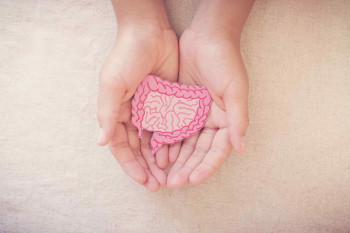The Truth About Migraines: Myths and Fallacies
Migraines are a debilitating condition that affects millions of people worldwide. Despite their prevalence, there are numerous myths and fallacies surrounding migraines that can lead to misconceptions and ineffective treatment approaches.
In this article, we aim to shed light on the truth about migraines by debunking common myths and providing evidence-based information to help individuals better understand and manage this condition.
The Truth About Migraines
Migraines are not just "bad headaches." They are complex neurological disorders that involve various symptoms and can significantly impact an individual's quality of life.
Unlike regular headaches, migraines are often accompanied by intense throbbing or pulsing pain, usually on one side of the head.
They can last for hours or even days and may be accompanied by other symptoms such as nausea, vomiting, sensitivity to light and sound, and visual disturbances.
Myth #1: Migraines are caused by stress alone
Many people believe that stress is the sole cause of migraines. While stress can be a trigger for migraines in some individuals, it is not the only factor. Migraines are influenced by a combination of genetic, environmental, and neurological factors.
Hormonal changes, certain foods, sleep disturbances, sensory stimuli, and even weather changes can all contribute to the onset of migraines. It is essential to recognize that each person's migraine triggers may vary, and stress alone is not the primary cause.
Myth #2: Migraines only affect women
Contrary to popular belief, migraines can affect both men and women. However, it is true that women are more prone to migraines, with hormonal fluctuations playing a significant role.
Women often experience migraines related to their menstrual cycles, pregnancy, or menopause. Nevertheless, it is important to acknowledge that men can also suffer from migraines, and their symptoms and triggers may differ from those in women.
Myth #3: Migraines are just a normal part of life
Some individuals believe that migraines are a normal part of life and that everyone experiences them to some extent. While headaches are common, migraines are not a normal occurrence. Migraines are a medical condition that should be taken seriously and treated appropriately. If you frequently experience migraines that significantly impact your daily activities, it is essential to seek medical advice for proper diagnosis and management.
Myth #4: Migraines can be cured by over-the-counter painkillers
Over-the-counter painkillers can provide temporary relief for mild headaches but are often ineffective in treating migraines. Migraines are a complex condition that requires a comprehensive approach.
Medications specifically developed for migraines, such as triptans, can help alleviate symptoms for some individuals. Additionally, lifestyle modifications, stress management techniques, and identifying and avoiding triggers can all contribute to better migraine management.
Myth #5: Migraines are psychological in nature
There is a common misconception that migraines are purely psychological or "all in the head." While psychological factors, such as stress and emotional distress, can contribute to the onset of migraines, migraines themselves have a physiological basis.
Migraines involve changes in the brain and nervous system, including abnormal brain activity, alterations in blood flow, and the release of certain chemicals. It is crucial to understand the biological underpinnings of migraines to develop effective treatment strategies.
Myth #6: Migraines are untreatable
Although migraines can be challenging to manage, they are not untreatable. With the right combination of medication, lifestyle modifications, and support, many individuals with migraines can experience a significant reduction in the frequency and severity of their attacks.
It is important to work closely with ahealthcare provider to develop a personalized treatment plan that addresses your specific needs.
Myth #7: Migraines are just a sign of weakness
Migraines are not a sign of weakness or a lack of willpower. They are a neurological condition that can affect individuals from all walks of life. Migraines can be incredibly debilitating, causing severe pain and interfering with daily activities.
It is essential to approach migraines with empathy and understanding, providing support to those who experience them rather than stigmatizing or blaming them.
Myth #8: Migraines can be prevented by avoiding all triggers
While identifying and avoiding triggers can be helpful in managing migraines, it is unrealistic to completely avoid all potential triggers. Triggers can vary greatly among individuals, and some triggers, such as weather changes, cannot be controlled.
Instead of focusing solely on trigger avoidance, a comprehensive approach that includes medication, lifestyle modifications, and stress management techniques is necessary to effectively manage migraines.
Myth #9: Migraines are purely a vascular problem
In the past, migraines were thought to be primarily a vascular problem, with blood vessel constriction and dilation playing a central role. However, research has shown that migraines are a complex neurological disorder involving multiple mechanisms.
While changes in blood flow do occur during migraines, they are not the sole cause. Neurological processes, including abnormal brain activity and the release of neurotransmitters, also contribute to the development of migraines.
Myth #10: Migraines can be diagnosed through imaging tests alone
Diagnosing migraines is not as simple as conducting imaging tests, such as CT scans or MRIs. Migraines are diagnosed based on a thorough evaluation of a person's medical history, symptoms, and physical examination.
Imaging tests may be ordered to rule out other possible causes of headaches, but they cannot definitively diagnose migraines. It is essential to consult with a healthcare professional who specializes in headache disorders for an accurate diagnosis.
FAQs
Q: Can migraines be hereditary?
A: Yes, there is evidence to suggest that migraines can have a genetic component. If one or both of your parents experience migraines, you may be more susceptible to developing them. However, having a family history of migraines does not guarantee that you will experience them.
Q: Can migraines be cured?
A: Currently, there is no known cure for migraines. However, with proper management and treatment, many individuals can experience a significant reduction in the frequency and severity of their migraines. Treatment focuses on symptom relief, prevention of attacks, and improving overall quality of life.
Q: Are migraines the same as tension headaches?
A: No, migraines and tension headaches are two different types of headaches. Migraines are typically more severe and involve additional symptoms such as nausea, vomiting, and sensitivity to light and sound. Tension headaches, on the other hand, are often characterized by a dull, aching pain on both sides of the head and do not have the same associated symptoms.
Q: Are migraines more common in certain age groups?
A: Migraines can occur at any age, but they often begin during adolescence or early adulthood. Some individuals may experience their first migraine during childhood. Migraines can persist throughout a person's life or may become less frequent or severe as they age.
Q: Can stress management techniques help with migraines?
A: Yes, stress management techniques can be beneficial in managing migraines. While stress may not be the sole cause of migraines, it can act as a trigger for some individuals. Engaging in relaxation techniques, such as deep breathing exercises, meditation, or yoga, can help reduce stress levels and potentially decrease the frequency or severity of migraines.
Q : Can migraines be prevented?
A: While migraines cannot be completely prevented, there are strategies that can help reduce the frequency and severity of attacks. Lifestyle modifications, such as maintaining a regular sleep schedule, eating balanced meals, staying hydrated, and engaging in regular physical activity, can contribute to overall migraine management. Additionally, identifying and avoiding specific triggers, such as certain foods, strong smells, or bright lights, can help minimize the occurrence of migraines.
Conclusion
In conclusion, it is crucial to separate fact from fiction when it comes to migraines. Migraines are not simply "bad headaches," but rather complex neurological disorders that require proper understanding and management. By debunking widespread myths and fallacies surrounding migraines, we can promote accurate information and support individuals in effectively managing their condition.
Remember, migraines are not caused solely by stress, nor are they exclusive to women. They are not a normal part of life, and over-the-counter painkillers may not provide adequate relief. Migraines are not purely psychological but have a physiological basis. While migraines can be challenging to treat, they are not untreatable, and individuals should seek proper medical guidance.
Remember, you are not alone in your journey with migraines, and there is hope for better management and relief. Stay informed, seek support, and take proactive steps towards managing your migraines effectively.

























